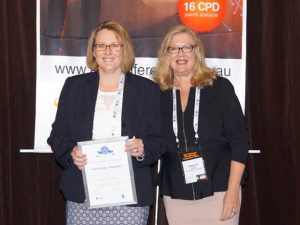No-one goes into business to stay in the same place year after year and ongoing analysis from practice management experts Business Health indicates many advisers are looking at growth areas within and outside their practices. In this article, Business Health encourages advisers to move from talking about growth to making it happen and runs through its favourite strategies for finding, starting and continuing growth in an advisory business.
In our last analysis of Australian practices, 92% of principals advised that they were looking to increase revenue, 83% their level of FUM, 60% the number of referral partners, while 41% were planning to expand their range of services.
And as we prepare to release our seventh Future Ready Report later this year, we’re sure these sentiments won’t have altered much and business growth will be on most advisers’ minds (ditto for licensees, manufacturers and service providers). But… are these truly goals, clearly defined and underpinned by well-thought-out strategies and actions, or are they simply hopes and good intentions?
Consider the current state of play:
|
COMPONENT |
AUST PRACTICES |
YOU |
| No Written Customer Value Proposition |
35% |
? |
| No sales/marketing plan |
65% |
? |
| Number of referral partners |
Average < 3 |
? |
| Number of client meetings per week |
Average 6.3 |
? |
All statistics have been derived from the latest analysis of the Business Health, HealthCheck and CATScan data warehouse.
As our scorecard suggests, for many there is some way to go and here are our favourite strategies for growth…
Tip 1: Start at the Beginning
Is it time for a makeover (or at least a check-up?). Have you rung your office lately or Googled yourself? Asked your clients for feedback? Checked out your website? Does your Client Value Proposition still work for you and your clients? Would you be a client of your business?
In an increasingly competitive and changing world, it doesn’t hurt to slow down every now and then, take a deep breath and ask yourself these types of questions. If you don’t like the answers, perhaps it’s time to consider an update?
Tip 2: Be Referable
It sounds obvious but referring is far more than someone (eg: an existing client, accountant, etc) simply passing on your name to someone else. Without a considered approach, we’re pretty sure, these opportunities won’t be optimised.
Do people (clients and referral partners alike) know you are seeking referrals? And do they know the type of referral you’re looking for?
Do you have readily available marketing material if someone asks for more information about you – either directly or by firstly checking you out on your website?
Testimonials from existing clients, for example, can be a fantastic support.
Have you clearly set out the process you wish a referrer to follow?
Events are tangible, cost effective in providing a ‘one to many’ strategy and manageable because you can control every aspect of delivery
Tip 3: Ask
As our CATScan analysis continues to show, despite the preparedness of clients to refer their adviser to a friend or colleague (with 87% stating they would refer), most don’t (only 60% believe they have referred). As to the reasons why, the most common is – they’re not being asked effectively!
Tip 4: Events
We’re a big fan of seminars, webinars, boardroom luncheons, lunch & learn and so on. You get our drift! If done well, we believe that such events can be an effective way for you to educate your clients, showcase your expertise (thereby reinforcing the wisdom of the client who chose you as their adviser in the first place) and allow you to effectively market your services to clients and targeted prospects alike.
Events are tangible, cost effective in providing a ‘one to many’ strategy and manageable because you can control every aspect of delivery. And they are relatively ‘anonymous’ and nonthreatening – clients comprise an audience and are not placed in a direct, face to face situation.
Tip 5: You Are Not Alone
Why not seek external input (assessment, advice, ideas) into your marketing efforts? And, in this regard, surely your BDM/PDM’s are ideally placed to contribute. As our various analyses continually show – a strong external adviser can deliver across so many fronts, not the least of which is profitability. Those practices which meet at least quarterly with an external adviser are achieving a significantly higher level of profitability than their counterparts who aren’t.
Tip 6: As Client’s Circumstances Change, So Do Their Needs
This is a drum we continue to bang. And with almost half of advisers’ clients already aged 60+ (and 40% already retired), we expect that estate planning, Centrelink, philanthropy and aged care are growing in importance and relevance to an increasing number of clients, who will surely begin to look elsewhere if their financial adviser is unable to offer assistance and guidance in these areas. The opportunity exists to add additional services directly to your current offer, or indirectly via referral relationships.
Tip 7: Get Proactive With Centres of Influence
Closely linked to the previous point, with the average number of centres-of-influence per practice currently standing at less than three, there is clearly an opportunity (or is that a need?) to increase the number of professional relationships. But for any referral arrangement to be truly successful, the relationship between the parties needs to be 100% in sync. For example:
- Do the parties fully appreciate what each other brings to the table?
- Do they share a similar approach to clients?
- What’s their view on fees and commissions?
- Are they happy in their own area of expertise or are they likely to encroach on each other over time?
- Do you have a formal service level agreement? If yes, were the service levels met?
- Have you formally reviewed the outcome of the relationship recently? If so, did you use “actual” results, or go by what you “think” happened?
And for those advisers who are actively targeting Millennials – for whom home ownership is an important goal – establishing referral arrangements with mortgage brokers seems a sensible strategy.
Tip 8: Broaden Your Clients
As existing client bases mature, new prospect sources will need to be uncovered. We offer two for your consideration.
- Children of your existing clients. While the ‘incumbent’ adviser is certainly in a strong position of influence, it cannot be taken for granted that the children will automatically turn to him/her for advice when they need it. The sooner you begin to consolidate your relationship with the children, the better!
- Mortgage brokers. It seems to us that there is a natural complementariness between brokers and advisers – the former is working primarily with Millennials while the latter is probably looking to enter into this market niche. When we consider a few of our key findings from both markets, it seems that both sides have something to offer the other.
|
ATTRIBUTE |
FINANCIAL ADVISER |
MORTGAGE BROKER |
| Number of Clients |
836 |
697 |
| % of Clients Aged 60+ |
53% |
6% |
| Clients With Household Income 75K+ |
34% |
76% |
| Notional Profit Per Principal |
$239,763 |
$121,731 |
All statistics have been derived from the latest analysis of the Business Health, HealthCheck and CATScan data warehouse.
Is your review process an experience your clients look forward to and value, or is it something more akin to a visit to the dentist?
Tip 9: Increase Marketing
The average practice spends around 1.5% of its annual revenue on marketing activities such as local advertising and sponsorships, its website, client newsletters, social media campaigns etc. This is a very subjective area of course and what is appropriate for one practice may not be so for another. But our point is the same irrespective- in a cluttered marketplace, each practice faces the same challenge – how to get its name out into its target market.
Tip 10: Review Your Review Meeting
The review (we still prefer ‘progress to plan’) meeting is the perfect time to show case your capability. It’s also the perfect time to not only uncover additional needs of the clients, but to also ask for a referral, set up an introduction to the kids or invite your client to a special event.
A note of warning – of the nine areas rated by clients through our CATScan diagnostic, ‘Reviews’ is rated the lowest. For many practices, there is much more thought and effort needed, if the potential of the review, is to be fully optimised.
Is your review process an experience your clients look forward to and value, or is it something more akin to a visit to the dentist?
Business Health is an independent organization specializing in advice and solutions to the financial services industry. Since its establishment in 2000, Business Health has evolved as one of Australia’s leading practice management groups. In addition to its Australian clientele, Business Health has clients in the United States, Canada, South Africa, Hong Kong, UK and New Zealand.
This article is republished with permission of Business Health and appeared as a series of client emails earlier this year.











